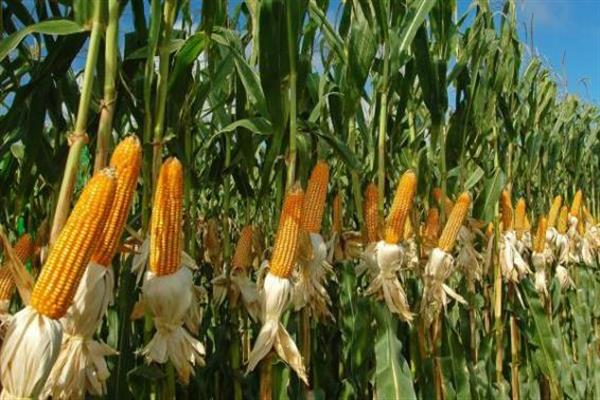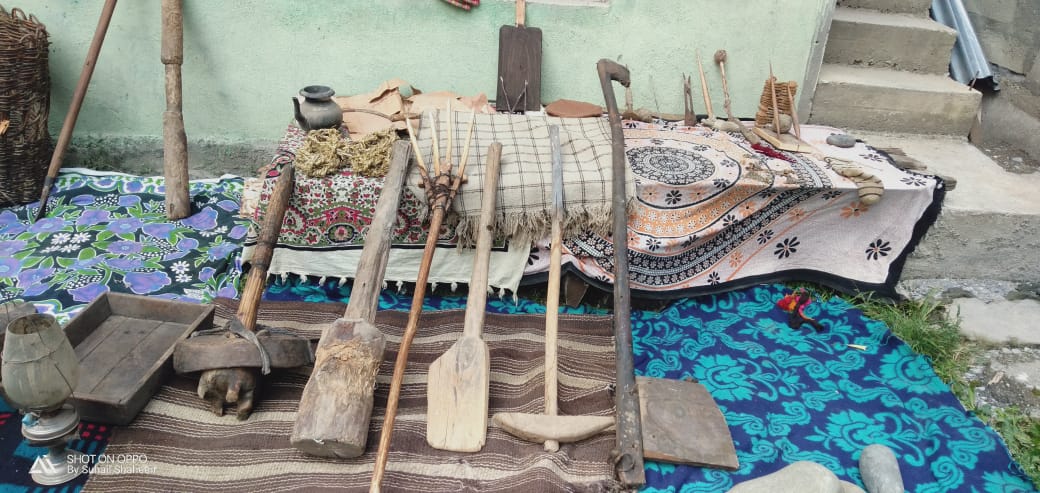Syeda Rafiyah
There are many farmers in Kashmir who are reaping success in maize cultivation and have improved their productivity over the years by using hybrid varieties. Nisar Ahmad Malik, a progressive farmer from Anantnag district, grows different varieties of maize and has always been curious about the latest technologies in agriculture.
Hailing from Qamar village of the district, he grows different maize varieties like Kishan Ganga (KG 2), SMC 15 (both local varieties) on a hilly land spread over 20 kanals. “Our area is hilly and the KG 2 variety is preferred as it is wind and rain resistant,” he said.
Before he started growing maize, Malik said the land located at the periphery was barren. Five years ago he started growing modern maize seeds which improved his income.
In the 20 kanals of land, he produces 45-50 quintals in a year. The price of one quality maize quintal is Rs 4000 in the market. Yearly, he earns approximately Rs 3 lakh.
“Maize produce is used locally as flour. It is also used as raw material for poultry and as food for livestock. It has good demand in the market. It is also used for sugar patients,” he said.
Malik said earlier, he used to grow old maize varieties and would produce only 15-20 quintals in one kanal of land. He said the Agriculture Department played an important role in guiding him on how to grow quality maize and techniques used to improve the production.
Malik said maize has a good entrepreneurship value. “If people have land they should use it for maize cultivation and it has a good market value,” he said.
The success in maize has motivated him to use several agriculture machines that have helped him and other farmers in the area.
The farmer has purchased several agriculture machines like maize sheller, sheller thresher machine, weeder machines which has boosted the agriculture sector in the area.
“The machines have eased farmers’ work. Earlier, the job was laborious as everything was done manually. Even people would get injured,” he said.
Apart from that he also owns many farm machines/equipment like paddy thresher, used for threshing of paddy crops. “It easy to operate and does not require much effort in its operation as it is operated by foot,” he said.
Malik also has mixed thresher (that threshes grain and removes the seeds from the stalks and husks. It does so by beating the plant to make the seeds fall out).
Dr Zahoor Ahmad Dar, Associate Director Research, Dryland Agricultural Research Station Rangreth, Srinagar who is also the in-charge of the Maize Centre at Sher-e-Kashmir University of Agricultural Sciences and Technology Kashmir, said whatever seeds are available in Kashmir come from SKUAST-K. It has a strong research base in place for maize and the centre is one of the best centres in India.
Jammu and Kashmir has total land of 2,80000 (two lakh eighty thousand) hectares under maize cultivation out of which 80,000 is in Kashmir, he said.
“We start with normal maize which is known as grain maize in which we have varieties like Shalimar Maize Composite (SMC4) and SMC7. There is another variety for high altitudes that is KishanGanga (KG) 2. We also have hybrid varieties like Shalimar Maize Hybrid-2,” he said.
Dar said there are other varieties of maize like sweet corn, popcorn, fodder and baby corn. “In maize whatever the market demand is we are here to fulfil it,” he said.
SKUAST-K also has drought tolerant maize variety (SMC8) which can be grown in areas where there is lack of irrigation. He said bread made out of the SMC8 variety is sweet in taste. “We also have some hybrid varieties like SMC5,” he said.
Dar said maize seed should be procured from an authorized source like Dryland Agricultural Research Station Budgam, Mountain Research Station Larnoo, SKUAST-K Shalimar campus, all KVKs of SKUAST-K and seed stores of Department of Agriculture.
“The Department of Agriculture along with all KVKs of our university are important partners in the dissemination of information and outreach programs,” he said.
Dar said the diseases that affect maize are negligible in Kashmir. Dar said in traditional maize, there was poor production but SKUAST-K varieties have helped farmers to produce 45-50 quintals of maize in one kanal of land.
“If we want to grow sweet corn, we have to make available post-harvest facilities. We have been growing sweet corn over the past 15 years but we face the issue of post-harvest facilities. Since it is a highly perishable commodity, we should have a strong post-harvest and value addition base,” he said.
Dar said if youth can take hybrid maize as entrepreneurship it has a good scope and it is a high ruminative area and can provide employment to others as well. “Our goal is to have economic, nutritional and food security,” he said.
All the outreach programs of SKUAST-K are entirely farmer oriented. “Farmers come to us with their issues. We have a research laboratory to resolve their issues,” he said.
Dar said maize, enriched with nutrients, faces lack of policy support from the government which is very important and which is an issue being faced by the farmers nationally.
“Farmers associated with maize should use more varieties of SKUAST-K. Maize has the potential of next revolution in agriculture. But the only thing is how much famers use our hybrid seed,” he said.
Director Agriculture Kashmir, Chowdhary Mohammad Iqbal said in 2021, Kashmir produced 210,000 metric tonnes which includes 20,4000 MT of normal maize and 6000 MT of sweet corn.
He said in Kashmir most of the people who grow maize belong to peripheries and rural areas adding that the department has taken several measures and is enhancing income of farmers through maize production. This year the department expects bumper maize production.
“We have also introduced sweet corn as a cash crop along with maize. This year we have tried to go for multiplication of the maize crop,” the director said.
“Maize is used as a raw material for the poultry industry. Kashmir produces high-quality maize which is rich in taste especially the yellow colour and people like it,” he said.
This year, the department has been organizing different programs across Kashmir in order to inform farmers to boost maize production.
“In Bijbehara areas farmers have sown maize seed on 5000 kanals of land and similarly farmers in Pahalgam have also grown maize on a large portion of land,” he said.








